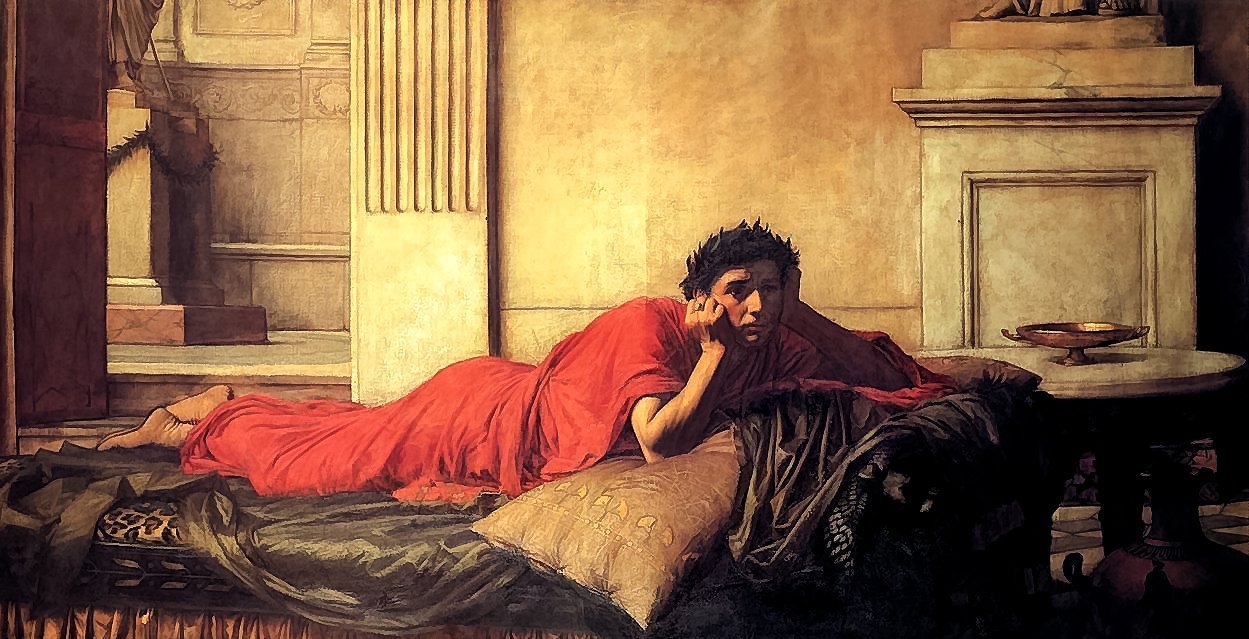Almost all resources for teaching and learning Latin focus on ‘Classical Latin’, a term typically referring to texts written between the first century BC and the first century AD, though the delineation of these boundaries is somewhat arbitrary, having far more to do with which authors are most venerated than with any kind of linguistic or stylistic criteria. Students whose primary interest lies in texts written in later periods, especially if those texts are associated with early Christianity or with the Catholic Church, sometimes wonder if they should set out to learn ‘Ecclesiastical Latin’ instead, a term referring primarily to the Latin liturgical tradition of the aforementioned Church.
Should I Learn ‘Church Latin’ Instead?
It must be understood that the terms ‘Classical Latin’ and ‘Ecclesiastical Latin’ do not refer to different languages or different dialects. Technically speaking, one could call them different chronolects, but in doing so, one would have to define them so broadly and account for so many outliers that it is not really useful to do so.
So what do these terms really, usefully distinguish?
‘Classical Latin’ and ‘Ecclesiastical Latin’ are really contexts in which Latin has been used, which don’t even necessarily correspond to differences in style. Throughout the entire history of Latin, texts from the Classical period have been viewed as a standard to emulate with varying degrees of adherence, acting as an anchor such that practically all Latin literature is written in what is fundamentally one language.
Even though classical Latin is the perennial stylistic anchor, divergence in style does exist across time, as it inevitably must, given Latin’s multi-millennia history. At times, such as during the Renaissance, it was more fashionable to follow the Classical model as closely as possible, while in other periods such as immediately after the Classical period, writing had a greater tendency to incorporate changes as they occurred in speech.
Latin Style Changed Over Time
To give one example of the kind of divergence that exists in the literature, let us compare the Vulgate, a 4th century translation of the Bible, with a 16th century translation by Sebastian Castellio which more strictly emulates the style of the Classical period. The latter translation makes no attempt to be faithful to the Vulgate, so there are arbitrary differences in vocabulary and phrasing that can be easily rendered in English translation:
| Vulgate, 4th century | dixitque Deus fīat lūx et facta est lūx, et vīdit Deus lūcem quod esset bona et dīvīsit lūcem ac tenebrās | And God said let there be light, and there was light, and God saw the light that it was good, and divided the light and the darkness |
| Sebastian Castellio, 16th century | jussit Deus ut exsisteret lūx, et exstitit lūx: quam cum vidēret Deus esse bonam, lūcem sēcrēvit ā tenebrīs | God commanded that Light exist, and light existed: which when God saw it to be good, he separated the light from the darkness |
The only significant structural difference is the use of the infinitive with accusative structure in ‘Classical Latin’ (saw it to be good) versus the structure with ‘quod’ seen in the Vulgate (saw that it was good). Just as in English, neither poses any significant difficulty for someone who knows the language, regardless of whether their primary interest lies in earlier or later texts.
Another example of a late Latin construction that might surprise someone only exposed to textbook Latin is the use of ‘quia’, which typically means ‘because’, but can be used to introduce indirect statements as in the following example from the Vulgate:
| Vulgate, 4th century | scīmus quia vērum est testimōnium eius | we know that his testimony is true |
| Sebastian Castellio, 16th century | scīmus testimōnium eius vērum esse | we know his testimony to be true |
As with the use of ‘quod’, with a bit of exposure and maybe a brief explanation of the variation in usage between earlier and later Latin, there is no issue of comprehension. A very similar effect can be achieved in English by rendering early 18th century English literature into a more modern style. Take, for instance, this excerpt from Robinson Crusoe:
He called me one morning into his chamber, where he was confined by the gout, and expostulated very warmly with me upon this subject.
Which could be rendered into ‘modern English’ as:
One morning he called me to his room, where he was confined due to gout, and very warmly discussed with me his concerns regarding the subject.
The original novel is replete with structures and phrases no modern English speaker would naturally utter, yet is perfectly comprehensible to anyone who has learned standard modern English. In exactly the same vein, a student of the de facto standard Latin of the Classical period will easily acclimate to any subset of the entire corpus of the last two millennia through simple exposure. Some texts from later periods will read almost as if they had been written in the first century BC (their authors having intended as such), while others will be more noticeably divergent, but fully accessible nonetheless.
Just Study Latin
For a student who speaks no English, but desperately wishes to read Robinson Crusoe in the original, the wealth of resources teaching ‘English’ are going to be by far the most efficient and productive way to achieve their goal. Explicitly searching out instruction in 18th century English would be an enormous waste of time and effort. Even for older forms of English this arguably remains true – Chaucer, which differs far more from modern English than the literary Latin of any period does from that of the first century, is still most easily accessed through modern English.
Of course, this is not because modern standard English is inherently a better starting point, but rather, this is the model that all of the best resources reference, and that most speakers use on a daily basis. Similarly, if 4th century Christian Latin were the stylistic anchor around which all of the best resources and speakers revolved, there’s no reason for which it wouldn’t serve to also access Classical texts. Indeed, primary source Latin texts from this period can become an invaluable component of the learning process once the intermediate level has been reached. However, the core of Latin is so universal that there is little need for beginner resources tailored specifically to Christian Latin. A student who has finished an introductory course teaching ‘Classical Latin’, such as Lingua Latina: Familia Romana, can immediately move on to working on the Vulgate or other Christian texts of a similar complexity.
Since the term ‘Ecclesiastical Latin’ or ‘Church Latin’ is most typically used to refer to the liturgical use of Latin by the Catholic Church after it had ceased to truly be anyone’s native language, it is worthwhile to investigate the kind of Latin produced by the Church today. Here is an excerpt from the weekly Latin news program Hebdomada Papae:
Íterum iterúmque clamat Póntifex ut “armórum strépitus inhibeátur”, póstea vexíllum osténdit ab ipsa Bucha delátum atque in suggéstu parvulórum manípulum récipit, qui ex Ucraína venérunt: “durum est a próprio solo eradicári”, effert Francíscus Papa.
The Pontiff again and again calls to “stop the noise of weapons”, then shows a flag brought from Bucha and welcomes on the stage a group of children who arrived yesterday from Ukraine: “It’s hard to be uprooted from one’s own land”, declares Pope Francis.
While these publications won’t always strive to perfectly fit the most narrow idea of how Classical prose should be constructed, the only thing that makes them fundamentally ‘Ecclesiastical’ is the fact that they are being produced by the Catholic Church. This is Latin. To a student of ‘Classical Latin’, such writing will, if anything, be less opaque than many Classical texts, since the subject matter is concrete and the sentences are short.
We must keep in mind that just as how terms like ‘Early Modern English’ or ‘Middle English’ are scholarly inventions which don’t reflect how speakers and authors have perceived their language throughout the centuries, the same can be said of Latin.
Chaucer did not set out to write in “Middle English.” In the same way, nobody ever set out to write in ‘Ecclesiastical’ or ‘Medieval’ or ‘Classical’ Latin. Especially since the period in which Latin ceased to be a natively spoken language, authors writing in it have always considered themselves to be using the same language that was standardized during the Classical Period, regardless of the degree to which they diverged from that stylistic model. Even the humanists who were attempting to write as classically as possible weren’t conceiving of what they were doing as selecting a distinct variant of Latin from the one used by the Church (many of them, of course, were churchmen themselves), but rather they viewed it as bringing their use of the Latin language in line with the style of the most revered authors who had ever written in Latin.
Wider Divergences from Classical Latin
Of course, it cannot be said that no Latin texts are sufficiently divergent from standard Latin to cause confusion. Even within the Classical period, there was a great deal of variation beyond what one will see described in most textbooks. However, one can point to examples that differ more radically. The most obvious would be preclassical Latin, also called ‘Old Latin’. Here is the very earliest Latin inscription, dating all the way back to the 7th century BC:
Mānios mēd vhevhaked Numaziōi
and here is the same in 1st century BC Latin:
Mānius mē fēcit Numeriō
Manius made me for Numerius
Much in the same way that Old English is largely unintelligible to a modern English speaker, it takes some training to read the earliest Old Latin inscriptions. However, the earliest preserved literary works are from only a century and a half before the classical period, and these can be easily read by someone with a background in classical Latin with the aid of a few footnotes here and there.
There are also texts from the medieval period that are effectively written in the vernacular language but spelled as though they were Latin. For instance, here’s a description of the Basilica of Saint-Denis from 799 AD:
In summo sunt intus illa ecclesia columnas inter totum XV. excepto habet foras per illos porticos de illa ecclesia columnas capitales LVIIII, alias columnas minores XXXVII.
This text can be rendered word for word into the Old French of roughly the same period:
En somme sunt ens l’eglese colonnes entre tout quinze. Excepte ha fors per los porches de l’eglese colomnes cheteles soissante trois, ails colonnes meneurs trente septe.
(Translation by A.Z. Foreman)
In no period was it ever the norm to flout the conventions of Classical Latin to this degree, but even texts like this one are fairly intuitive to a fluent reader of Latin.
Classical vs. Ecclesiastical Latin Pronunciation
So if Old Latin, Classical Latin, Medieval Latin, Early Modern Latin, and even the Modern Latin of the Vatican are all the same language with occasional stylistic divergences, what’s the big deal with “Ecclesiastical Latin” versus “Classical Latin”?
It all comes down to pronunciation.
Pronunciation is the only arena within which ‘Ecclesiastical Latin’ and ‘Classical Latin’ can be presented as distinct, competing standards, rather than simply subsets of literature written in the Latin language. Typically, the former term refers to the Italian traditional pronunciation of Latin, established in the 20th century as the standard for the whole Catholic Church, and ultimately deriving from the early 9th century Carolingian reform which reinstituted the practice of reading Latin in a way that corresponded closely with its spelling.
Meanwhile, ‘Classical Pronunciation’ refers to a reconstruction of how Latin was most probably pronounced in the 1st century BC by urban Romans, based on numerous fonts of evidence including the testimony of grammarians, spelling variation, loans into other languages, and the developments observed across the romance languages. Since it is from this period that our standard spelling derives, this pronunciation arguably even more closely matches the spelling.
Compare this excerpt of Caesar read in the Classical and Ecclesiastical pronunciations:
Gallia est omnis dīvīsa in partēs trēs, quārum ūnam incolunt Belgae, aliam Aquītānī, tertiam quī ipsōrum linguā Celtae, nostrā Gallī appellantur. Hī omnēs linguā, īnstitūtīs, legibus inter sē differunt.
The primary differences that can be heard in this excerpt are as follows:
| In Classical Latin: | In Ecclesiastical Latin: |
| – m at the end of a word typically represents a nasalization of the preceding vowel, only being pronounced as a full consonant before the letters m n p b t d k g – n before f and s is realized as a nasalization of the preceding vowel, which is lengthened as a result – v is pronounced as the sound /w/ as in English wine – ae and oe are pronounced as diphthongs – c and g are always hard /k g/ as in English cake or game – t is always hard /t/ as in English time – h is pronounced | – m and n are always pronounced as full consonants – v is pronounced as the sound /v/ as in English vine – ae and oe are pronounced like e – c and g are ‘soft’ /t͡ʃ d͡ʒ/ before the vowels i, e, ae and oe, like the ch and ge respectively in the English word change – t is pronounced t͡s before i followed by another vowel, like the ts in English cats – h is silent |
It is up to students whether they use one of these systems of pronunciation or one of the many other traditional systems that exist, such as the traditional Polish or Spanish pronunciations. Even in this one context within which Latin can be divided into distinct variants, all the variants are still fully compatible with one another. Here is an excellent video providing more detail on the origin of this as well as other traditional European systems of pronouncing Latin.
Among Latin speakers, it is typical for people using different pronunciation systems to fluently converse without ever broaching the subject of ‘Classical’ or ‘Ecclesiastical’ Latin, just as speakers of the various dialects of American, British, Irish, Australian, and other varieties of English might do. This means that, if you learn Latin, you will gain access to over two thousand years of literature, the vast majority of which was written long after the fall of the Western Roman Empire.

Raphael Turrigiano, ALI’s Latin Fellow, is a Latinist, polyglot, language enthusiast, occasional content creator, and language teacher with several years of experience. He firmly believes in the effectiveness of comprehensible input and active pedagogy. Raphael graduated with a double major in Linguistics and Japanese from the University of Edinburgh. His interests include historical linguistics, historical phonology, general language learning methods, and the acquisition/teaching of pronunciation as a second language learner.




